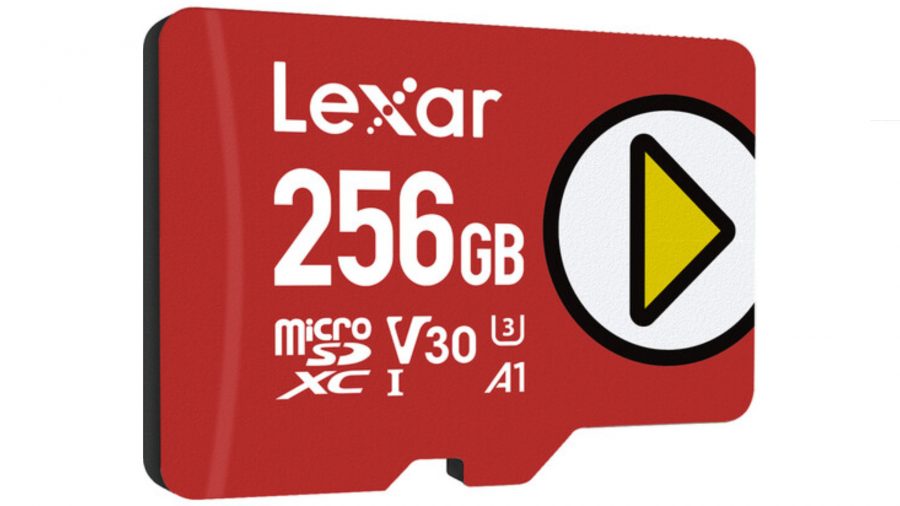Valve’s new handheld gaming PC has the largest catalogue of launch games we’ve ever seen, but you’ll find it tough fitting many of them on your device without popping in the best SD card for Steam Deck. Of the three Steam Decks available, 512GB is the most internal storage you’ll get, which will just about fit Call of Duty: Warzone, Red Dead Redemption 2, and Assassin’s Creed: Valhalla with enough room for SteamOS.
Fortunately, you can expand storage easily enough. Those of you that don’t want to deep dive under the hood to install an NVMe SSD into your Steam Deck can use the microSD card slot on the bottom to cram up to 1TB of storage – at least until a 2TB card finally hits shelves. You might even get away with one you’ve previously used with your smartphone if you don’t mind formatting it, but you’ll need to make sure it has good read speeds and enough storage first – fast write speeds are a bonus.
Generally speaking, microSD cards are a little slower than the eMMC storage found in the base Steam Deck, so you’ll want to keep all your favourite games on the device itself. That said, microSD cards let you take more games, movies, TV shows, and software on the go.
There are plenty of Steam Deck accessories to choose from, but the best Steam Deck SD cards from reputable brands like Samsung, SanDisk, or Lexar should definitely be at the top of your list. They aren’t the cheapest additions you can make, but they are one of the most valuable.
SanDisk Extreme microSDXC
Naturally, the best SD card for Steam Deck should be as big as possible without sacrificing its read speeds – no disrespect to loading screen tips, but we’d rather be playing the game. The SanDisk Extreme microSDXC 1TB model struggles to achieve its claimed 160MB/s read speeds, but it still performs better than its competition with heights of 100MB/s. This is the sweet spot with the Steam Deck’s own limitations in mind.
Western Digital claims that the SanDisk Extreme microSDXC card is waterproof, shock proof, and even x-ray proof. We don’t recommend putting any of those claims to the test, but it also comes with a lifetime warranty if you do, which is more than most alternatives. If 1TB is a bit too rich for your taste, it also comes in 512GB, 400GB, 256GB, 128GB, 64GB, and 32GB flavours, although you might struggle with anything in double digit territory.
Samsung EVO Plus or EVO Select
Different names, different colours, but the same specs under the hood: the Samsung EVO Plus and EVO Select are virtually identical. Amazon has exclusive rights to the Select in some countries, but with the same speeds, classifications, and warranties, it’s worth shopping around for the cheapest one available. Better yet, they’re sometimes available in multi-packs.
Write speeds are slightly slower than SanDisk’s alternative, but read speeds contend with the best at 100MB/s. This is plenty for running indie games on the Steam Deck without a hitch.
Lexar Play
You’ll save the most money by dropping to a 512GB, 256GB, or even a 128GB model, but the Lexar Play is often the cheapest 1TB on the market thanks to sales. It’s designed with smartphones and the Nintendo Switch in mind, but it’s up to the job of running your Steam library without issue.
SD Card classifications
When you look at an SD card, you might see what looks like a bunch of gibberish. Much like gaming monitors and their unruly string of letters and numbers, each of these has a meaning and the Steam Deck has limitations.
For example, the Steam Deck adopts UHS-I, which tops out at around 100MB/s read speeds and 90MB/s write speeds. You’ll be able to use the faster UHS-II standard because it’s backwards compatible, but you won’t get the higher rated read and write speeds. Since you’ll need to format the microSD card to the Steam Deck’s operating system, it’s not worth spending the extra on one branded UHS-II unless you’re plugged into the Linux ecosystem with other devices, too.
Why not try the best external SSD for gaming instead?
The higher the V-rating, the better. V30, V60, and V90 show what the minimum sustained write speed is, being 30MB/s, 60MB/s, and 90MB/s respectively. Write speed isn’t as important as read speed, given you’ll want to download your games in advance, but no one likes waiting around.
The number that looks like it sits within a circle (it’s actually the letter C) is the speed class. Class 10 is the fastest and the default recommendation for HD video recording, but this is less important for the Steam Deck.
The ‘A’ number is the application performance class, and A2 is naturally better than A1. Both are designed for smartphone operating systems, like Android, meaning the standard is less relevant to the gaming performance of the Steam Deck but could help when you’re hopping from one piece of software to another.
Can I use my Nintendo Switch SD card?
The short answer is yes, but you can’t swap the SD card between devices on the fly. The Nintendo Switch uses microSD cards that have the same form factor and they will fit into the Steam Deck, but you’ll need to format it, meaning you can’t store both PC games and Switch games at the same time. You’ll also want to consider the specs of the microSD cards you own, as they might not hit the heights that the Steam Deck demands.




